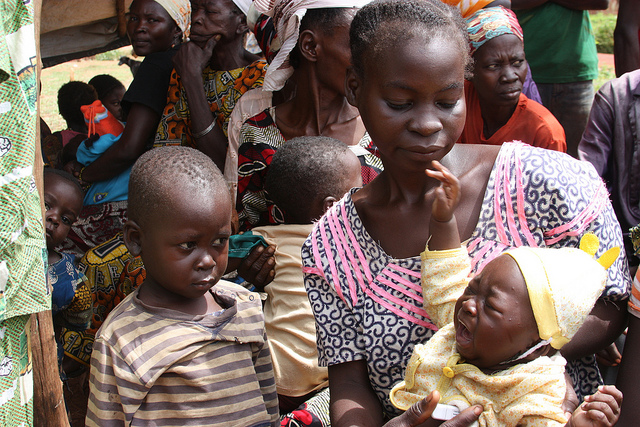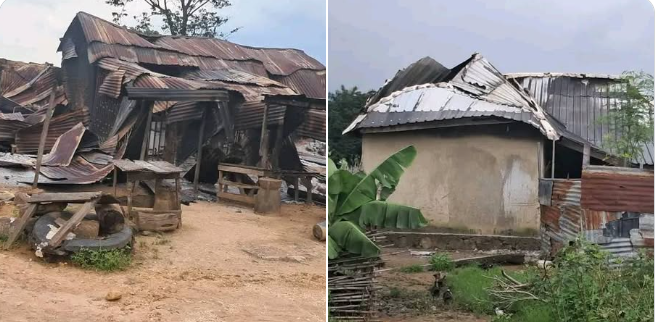At the last count, lassa fever has claimed many Nigerians, with over a hundred cases recorded across 16 states of the country.
According to the Nigeria Centre for Disease Control and Prevention, NCDC, between February 26 and March 3, a period of one week, it has recorded 20 deaths and 109 cases of lassa fever in 16 states.
NCDC described lassa fever as an acute viral hemorrhagic (excessive bleeding) illness that is transmitted to humans through contact with food or household items contaminated by infected rodents or contaminated persons.
Its symptoms include fever, headache, sore throat, general body weakness, cough, nausea, vomiting, diarrhoea, muscle pains, chest pain, and, in severe cases, unexplainable bleeding from ears, eyes, nose, mouth, and other body openings.
The agency said that despite the efforts, the country continued to face new cases and fatalities.
It stated that the predominant age group affected is 31 to 40, while the male-to-female ratio for confirmed cases is 1:0.9.
The public health agency said that the National Lassa Fever multi-partner, multi-sectoral incident management system had been activated to coordinate response at all levels at the Emergency Operations Centre (EOC).
The affected states, according to the agency include Ondo, Bauchi, Edo, Benue, Ebonyi, Kogi, Kaduna, Taraba, Enugu, Delta, Jigawa, Adamawa, Anambra, Rivers, Ogun, and Oyo.
The report noted that 62 percent of all the confirmed cases were reported from Ondo, Edo, and Bauchi states, while the remaining 38 percent were from the other states.
The NCDC, via its official website, said that for week nine of 2024, there was an increase in the confirmed cases from 96 in week eight.
“Cumulatively, the report shows that from weeks one to nine, Nigeria recorded 682 confirmed cases and 128 deaths with a case fatality rate, CFR, of 18.8 percent, which is higher than the CFR for the same period in 2023, at 16.1 percent,” said NCDC.
On March 6, the Federal Medical Centre, FMC, Jalingo, Taraba State, said no fewer than 19 persons were confirmed killed by lassa fever between January and February this year.
The state Commissioner for Health, Gbangsheya Buma, who confirmed the outbreak of the disease to journalists, said the state Ministry of Health was closely monitoring the situation, and working in collaboration with the NCDC and FMC Jalingo authorities to contain the spread of the disease.
“It is not a surprising thing; this is the season and we have made preparations. Though the outbreak may be overwhelming, I just received support from the NCDC. They have sent some people here to provide technical support with the aim of stopping the progress of the disease.
“We are actually on top of it. We have provided support as a state to the FMC to provide free treatment to patients of Lassa fever.
“Eight of the nine blood samples from suspected cases collected from the FMC Jalingo as of last Friday have been confirmed for Lassa fever,” Buma said.
The acting Head of Clinical Services at the FMC Jalingo, Joseph Kuni, who further confirmed the development, said that “presently we have 10 patients in our isolation ward. The results for some of them are being awaited.”
Kuni disclosed that from January to February, the centre had recorded 19 Lassa fever related deaths from the isolation centre.
“From January to February, we sent 105 samples, and 60 of them came out positive for Lassa fever, while 39 came out negative and the remaining ones are still being awaited,” he added.
Also on March 2, Benue State was equally said to have recorded 46 lassa fever cases and nine deaths in seven local government areas of the state, with some of the cases emanating from the Internally Displaced Persons’ camps in the state.
The state epidemiologist, Dr. Terungwa Ngishe, who disclosed this in Makurdi, the Benue State capital, said the council areas affected in the outbreak included Obi, Okpokwu, Gwer West, Makurdi, Guma, Gwer East, and Ukum.
He revealed that the infection rate was higher than the figure from last year, assuring that sustained efforts were on to contain the outbreak.
He said: “From the results obtained, Benue has 46 cases of lassa fever. The cases are spread across seven LGAs, namely: Obi, Okpokwu, Gwer West, Makurdi, Guma, Gwer East, and Ukum.
“It is actually an increase compared to what we had last year. So far, we have nine deaths in confirmed cases as we speak.
“And we have been able to bury all the dead in accordance with safe burial protocols across the various areas of the state where they hail from. And we have sustained a response through the intervention of the Federal Government, World Bank, and the NCDC.
“They have spoken loudly to enhance our surveillance efforts, risk communication in the communities; and have also spoken to the laboratory component of the response and coordination.
“Given the number of deaths we have recorded, we are hoping to reduce the number such that the key fatality rate for the state is less than 10 percent; which is what the nation expects from the state. For now, what we have is above that figure.”
On when the state recorded its first case this season, Ngishe, said: “The first case was noticed in week 50 of last year. As you know, generally, there are shortages of personnel for several reasons, and Benue State is not exempted.
“However, we are looking forward to such capacity staff that will join and help us in the course of the response; because, when you are overwhelmed or have a lot of cases, you inform the government and the partners and keep improving on it.”
Also on March 2, the Ebonyi State Ministry of Health said 14 deaths have been recorded out of about 110 suspected cases of lassa fever recently recorded in the state.
Dr. Hyacinth Ebenyi, the Director of Public Health at the ministry, said that the 14 cases were among the 29 confirmed cases of the disease recorded as of February 20.
Ebenyi expressed concern that no fewer than 110 suspected cases of the disease were recently recorded in the state.
“Yes, there has been an increase in the cases of Lassa fever. The disease is really endemic in the state. It did not just start now; it has been here, mostly during the dry season.
“So far, we have had suspected cases of 110, and out of this figure, we recorded 29 confirmed cases. Out of the 29 cases, as of Tuesday, we lost 14 persons,” the director said.
Again on March 25, Ebonyi State Government came up with a more comprehensive report about the development. It revealed that about 23 persons have been killed by Lassa fever in the state this year.
The State’s Disease Surveillance and Notification Officer, Orogwu Sampson, disclosed this to journalists in Abakaliki.
He said the state has recorded 45 confirmed cases of the virus with 23 deaths, leaving a case fatality rate of 51.1 percent.
According to him, five health workers were infected by the virus, with one death, while two pregnant women were also infected by the disease.
Orogwu identified seven out of the 13 local government areas in the state as the hotspots of the disease, adding that Abakaliki Local Government Area alone recorded 21 cases with 12 deaths.
He revealed that there was a higher number of cases last year with less deaths, but stressed that this year has recorded more deaths with lower cases.
“The current situation is that from the outset of this outbreak for this season, we have had 45 confirmed cases in Ebonyi, with 23 deaths leaving a case fatality rate of 51.1 percent.
“Of these 45 confirmed cases, we have had five health workers’ infections with one death from a health worker.
“We have had two cases from pregnant women, and three cases from school children. We have also had one case from a retiree. These cases are coming from across the whole state, but principally from seven hotspot LGAs.
“So, for the 45 cases we have recorded, the Abakaliki Local Government Area is accounting for 21 cases and 12 deaths. The bulk of the cases are coming from Abakaliki.
“The Ebonyi Local Government Area has had six confirmed cases with one death; Ezza North has had seven confirmed cases and five deaths; Ikwo LGA has had four confirmed cases and three deaths; Izzi has had one confirmed case and one death; Ohaukwu has had five confirmed cases with no death, while Onicha has had one confirmed case and one death.
“Abakaliki has higher confirmed cases and deaths because there are more people in Abakaliki, and as the town is growing, it is equally coming up with its own side effects.
“We are beginning to have slums and the bulk of the cases in Abakaliki are coming from the Hausa Quarters and the Nkaliki axis.
“In Ezza North, the bulk of the cases are coming from Umuoghara and Oriuzor. The Oriuzor has proximity to Nkaliki.
“Then Umuoghara has become a refuse dumpsite and it has become a breeding site for rats. So, rats move from there to communities. These are what have accounted for the high numbers of the virus in these two local governments,” he said.
On February 26, the Kaduna State Government also confirmed five deaths following lassa fever outbreak in the state.
The confirmation was made by the state’s Commissioner for Health, Hajiya Umma Ahmed
Health

.jpg)









